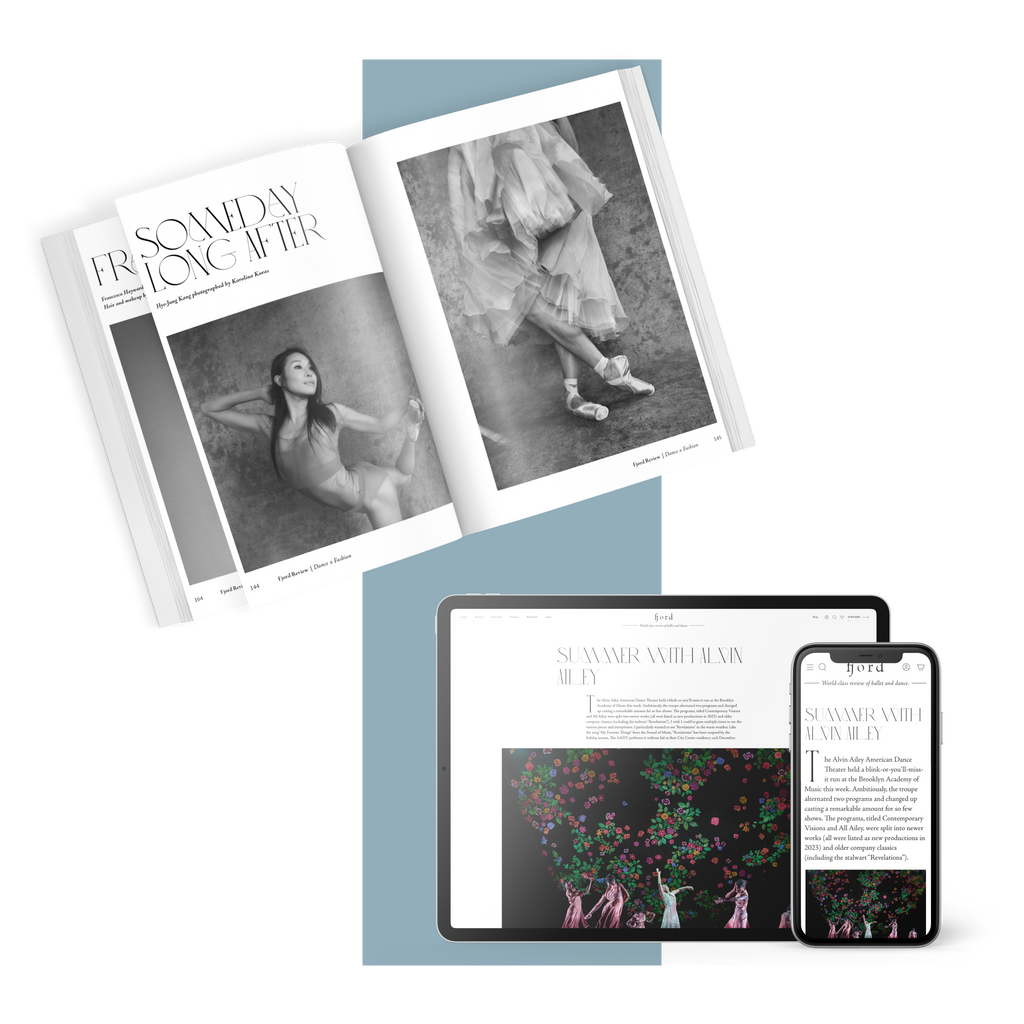Lycra and Lace
What is he looking at? The dancer in a blue biketard bounds around the stage, his curly hair flip-flopping as his head snaps right, left, and center.
Continua a leggere
World-class review of ballet and dance.
In the programme notes for “…como el musguito en la piedra, ay si si si...” (“Like moss on a stone”), Pina Bausch’s final work before her sudden, unexpected death in 2009, dance writer Sarah Crompton insists the piece is “open to infinite interpretation,” that “[nothing] should be seen as explicit,” even the apparent allusions to Chile, where the German choreographer’s troupe took up temporary residence and conceived it as part of its famous World Cities series. Categorical interpretations might be off the table, but an abstract spirit of voyage and discovery does seem to infuse “Como el musguito,” inserting itself, however implicitly, in the dancers’ serene demeanour, which echoes hazy days under a hot sun, and the knowing glances they share, reverberations of the personal bonds they’ve cultivated during their journey as a company in the years since Bausch’s death. It’s certainly perceptible in their stated determination to, as company member Jonathan Fredrickson tells Crompton, “encapsulate what [the piece] has become, not where it came from.”
Performance
Place
Words

Tanztheater Wuppertal Pina Bausch in “…como el musguito en la piedra, ay si, si, si…” Photograph by Bo Lahola


“Uncommonly intelligent, substantial coverage.”
Your weekly source for world-class dance reviews, interviews, articles, and more.
Already a paid subscriber? Login
What is he looking at? The dancer in a blue biketard bounds around the stage, his curly hair flip-flopping as his head snaps right, left, and center.
Continua a leggereTwo performers crawl in on hands and knees wearing neon green, hooded coveralls—the lightweight papery kind made for working in a sterile environment—and clusters of balloons pinned to their backs.
Continua a leggereWill Rawls makes boundaries visible by defying them. Known for the disciplinary and topical range of his projects, the choreographer, director, and performer approaches issues of representation in “[siccer],” a multi-part, multi-site work co-presented by L’Alliance New York’s Crossing the Line Festival. A live performance at Performance Space New York accompanies a multimedia installation at the Kitchen, a book published by Wendy’s Subway, and an album published by the artist. With a creative process reaching back to 2018, the work delves explicitly into pandemic-era energies and inertias with focused intimacy and a pervasive sense of instability.
Continua a leggereIt is always interesting when multiple theme steps emerge over the course of a mixed repertory evening, but it is uncanny on one featuring five different ballets, each with a different choreographer and composer, covering a twenty-year span (2005-2025).
Continua a leggere
comments